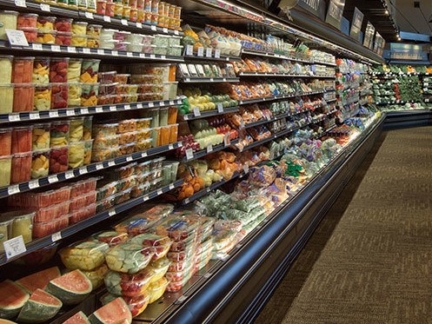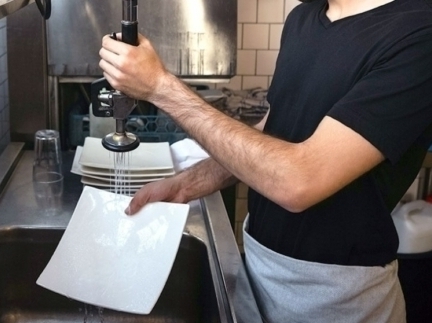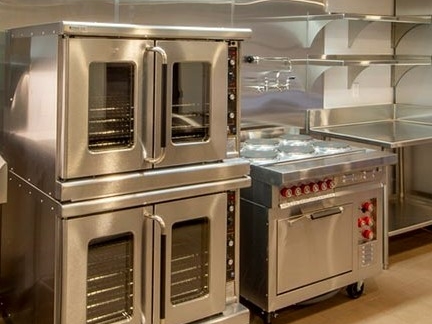Energy costs are significant expenses for grocery and convenience stores, averaging more than $4 per square foot per year. When you combine those high costs with thin profit margins, it’s estimated that $1 in energy savings is equivalent to increasing your sales by $59.
Improving your energy efficiency saves you money, reduces your energy consumption, and creates a better shopping environment. It can also help lower your carbon footprint to help address climate change, something your customers will appreciate.
Heating

Water Heating

Heating Systems
Space heating represents nearly 75% of a grocery or convenience store’s natural gas consumption, which makes it the best place to prioritize your efficiency efforts.
CONTAINING THE COLD: Heating, cooling, and refrigeration systems often compete inside grocery stores. Adding doors, night covers, and air curtains to refrigerated cases help prevent cold air from leaking into the store and reduce the energy needed to heat your space.
RECOVER THE HEAT: Heat recovery systems can be added to refrigeration equipment to capture heat in the form of hot water. The heat from a 7.5-horsepower compressor can provide nearly 100% of a mid-sized store’s hot water needs for kitchen clean up and sinks. Grocery and convenience stores can also use a heat exchanger to recover and reuse this heat for your store instead of using gas-fired equipment.
SET IT AND FORGET IT: Programmable thermostats are a great way to save energy, especially in areas that are unoccupied during certain parts of your day or night.
GET YOUR DUCTS IN A ROW. Ducts for a forced-air furnace, central air conditioner, or heat pump are big energy wasters. Sealing and insulating them improves your heating by as much as 20%.
Food Prep
ENERGY STAR EQUIPMENT: ENERGY STAR equipment uses 10% to 50% less energy than conventional models. Check out the Foodservice Equipment link below for energy-saving options and current rebate offers.
REDUCE OPERATING TIMES: Reducing the operating time of an idle appliance can cut your cooking related energy consumption by up to 60%. If that’s not convenient, choose equipment that uses less energy when idle. For example, rapid-cook ovens (which combine microwave with other heating technologies) have a low power draw when idle.
KITCHEN EXHAUST HOODS: Most commercial kitchen hoods operate at 100% capacity, even during idle periods, wasting thousands of dollars of energy every year. You can reduce your costs by installing fan controls that vary the speed based on demand.
Water Heating
REDUCE THE FLOW: Between cooking, dishwashing, and cleaning, water heating can comprise 20% of a kitchen’s energy use. The first step is to reduce the amount of hot water going down your drain by installing low-flow spray nozzles and low-flow aerators.
ENERGY STAR EQUIPMENT: Consider upgrading your water heater. ENERGY STAR-certified water heaters use around 15% less energy than conventional units.

